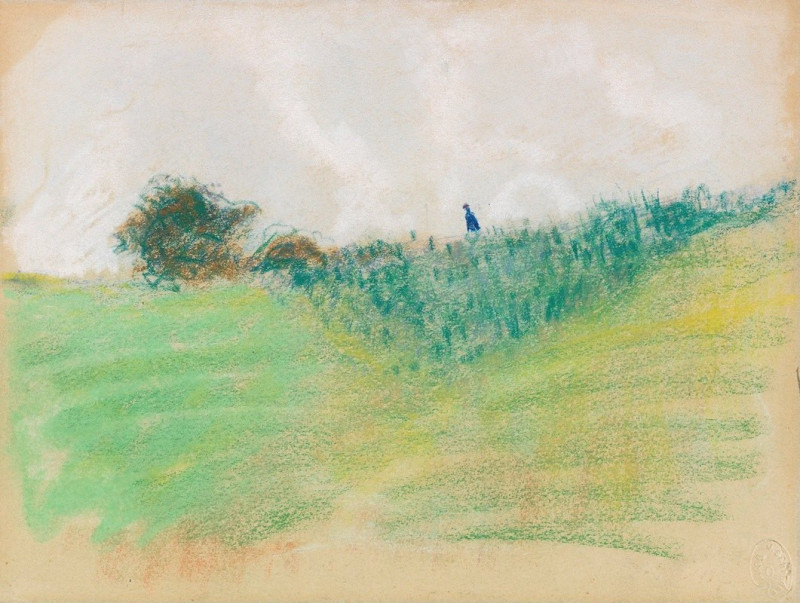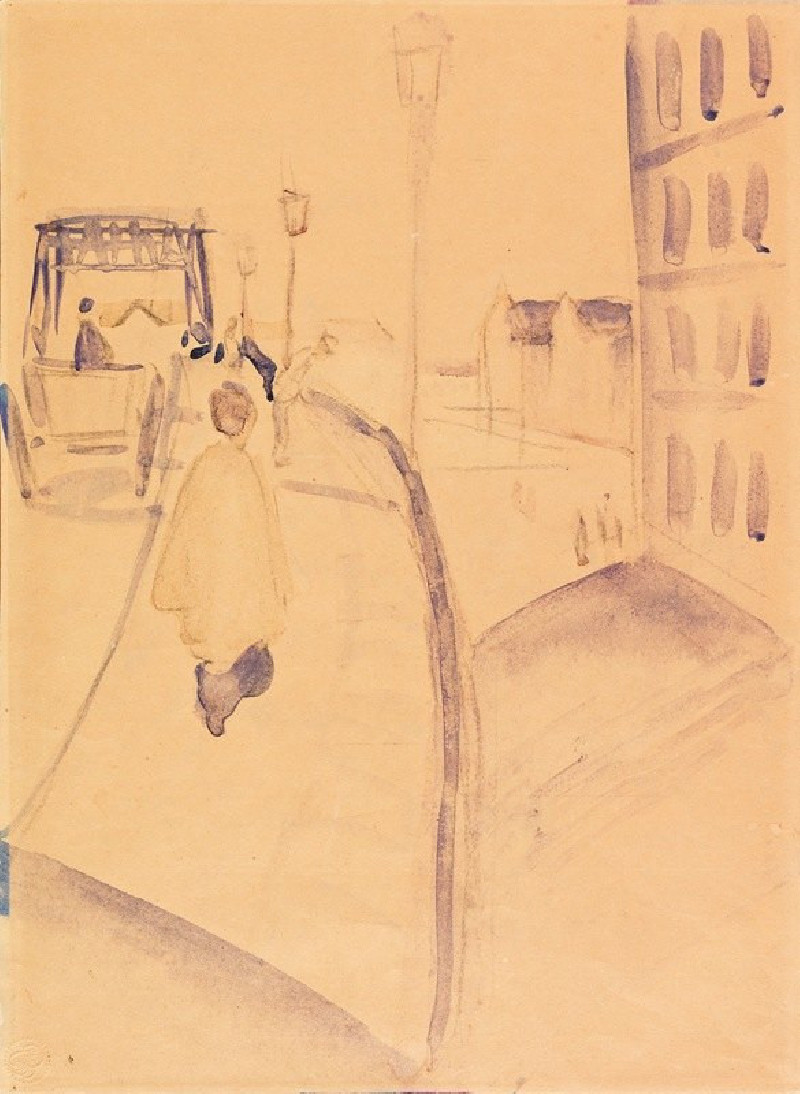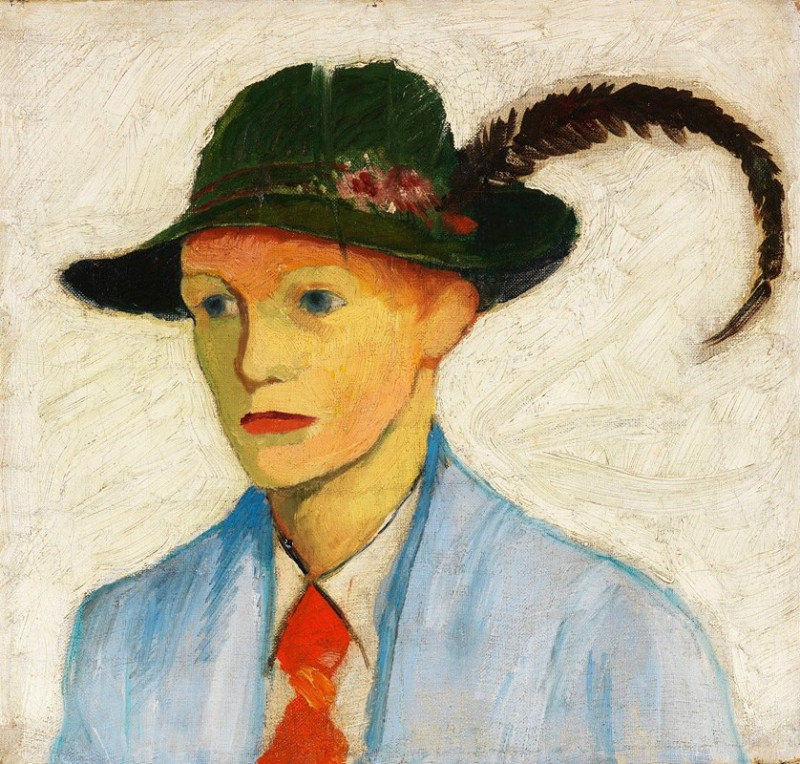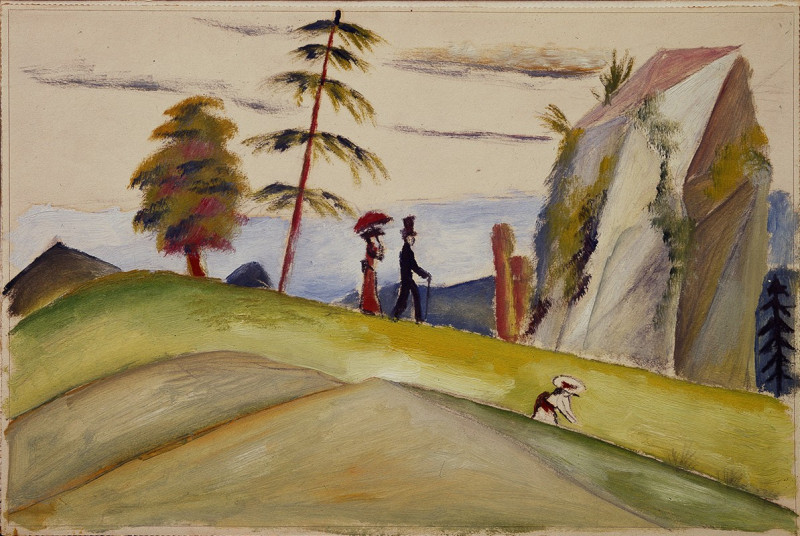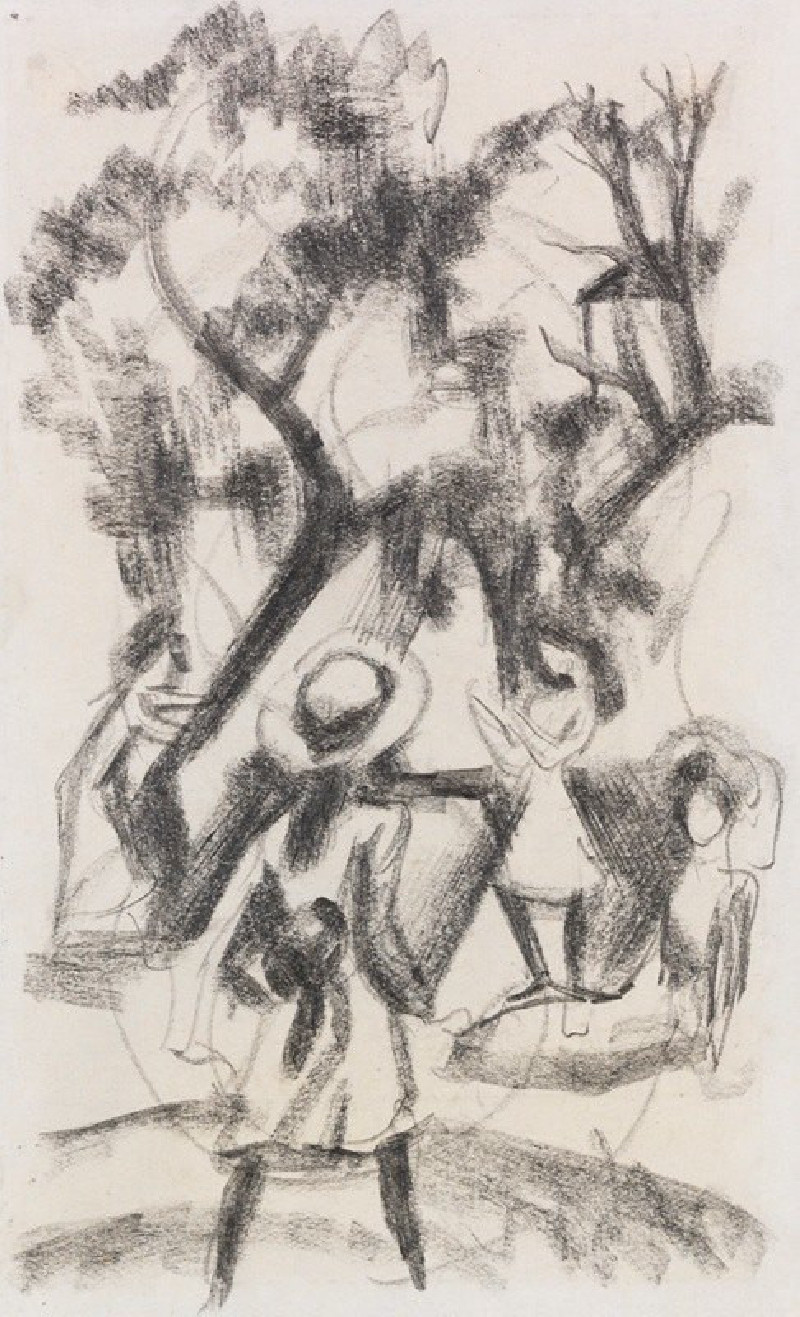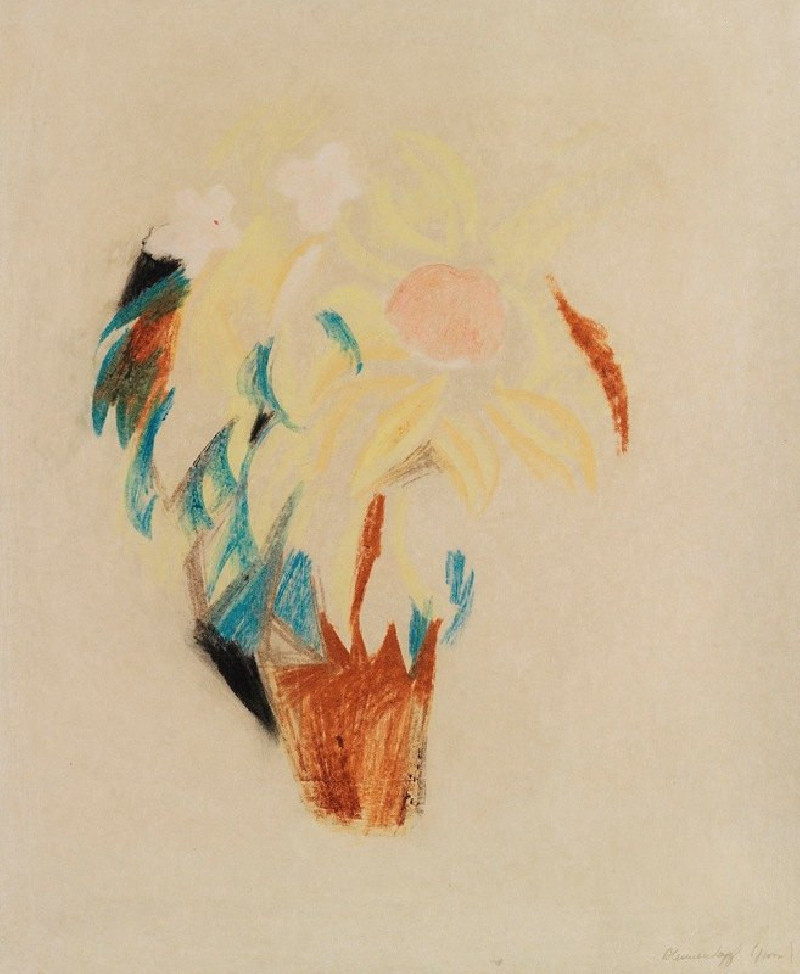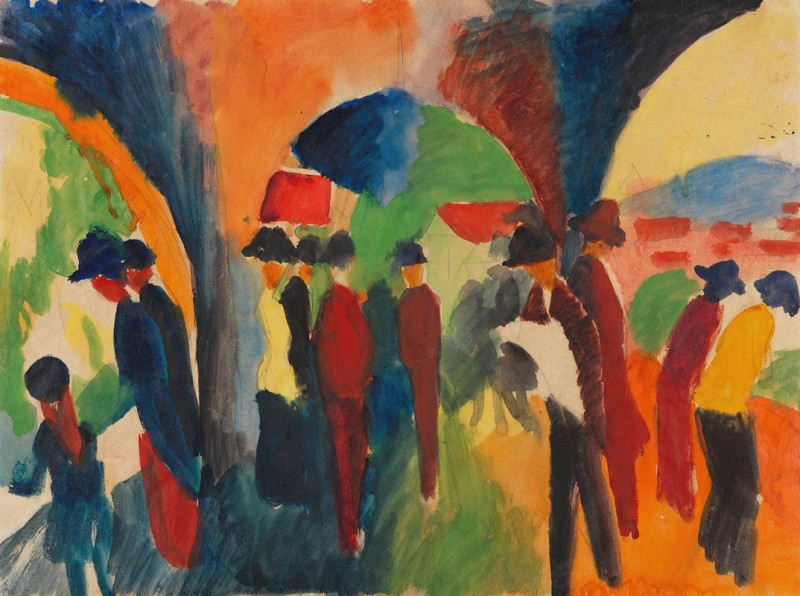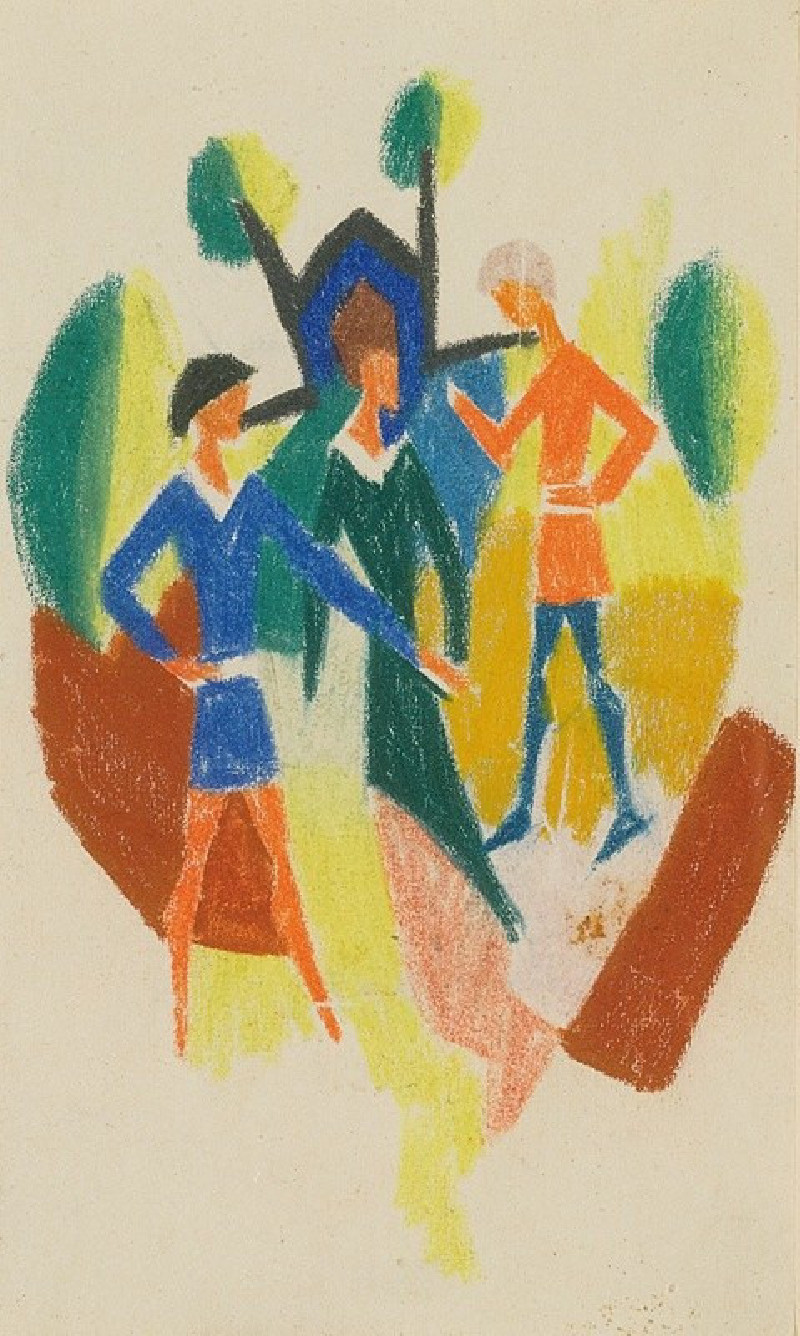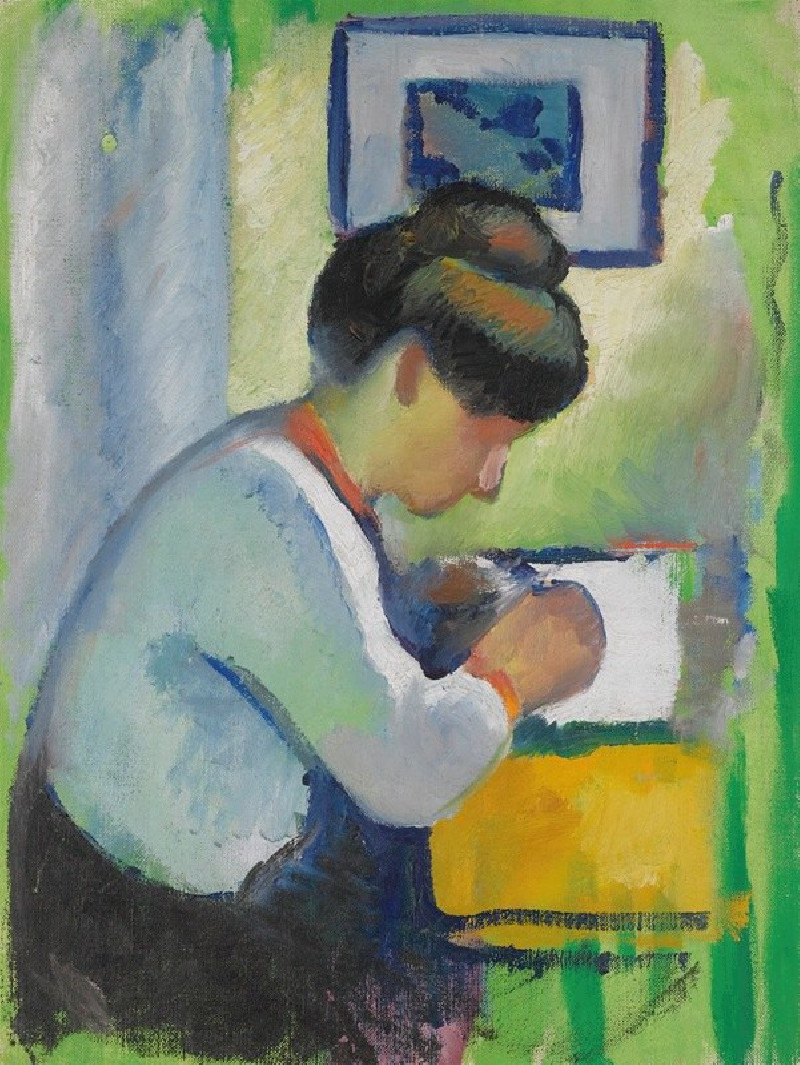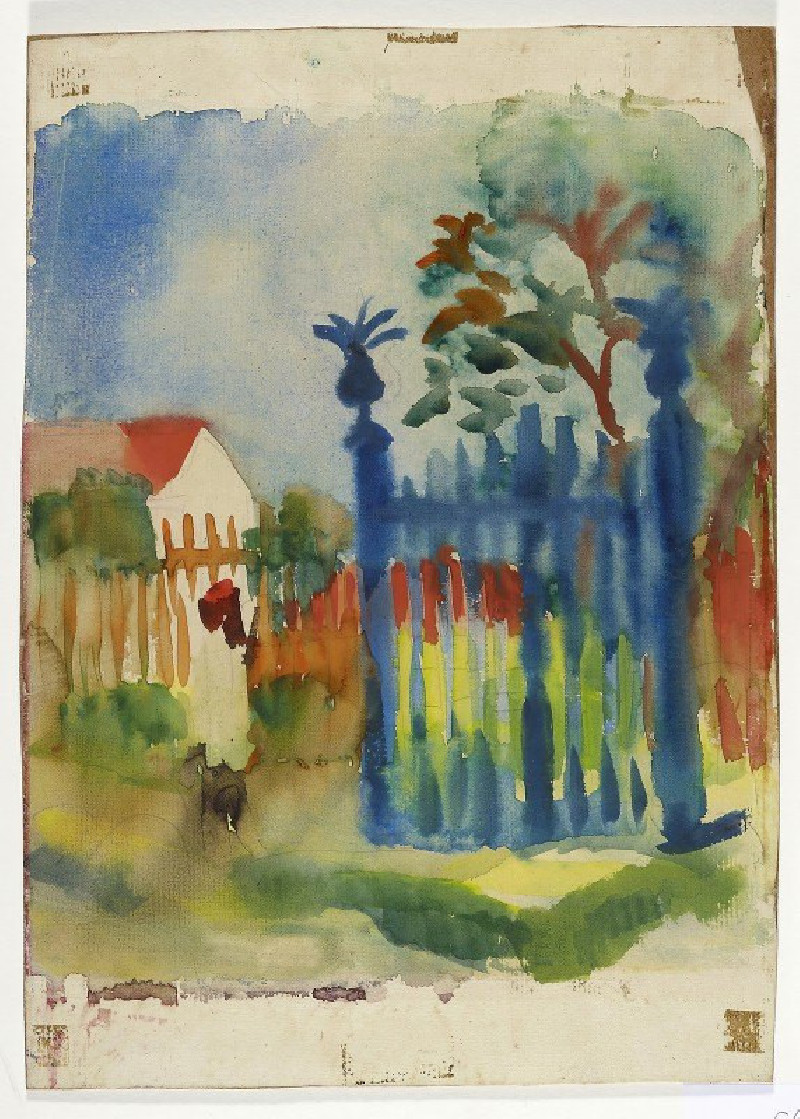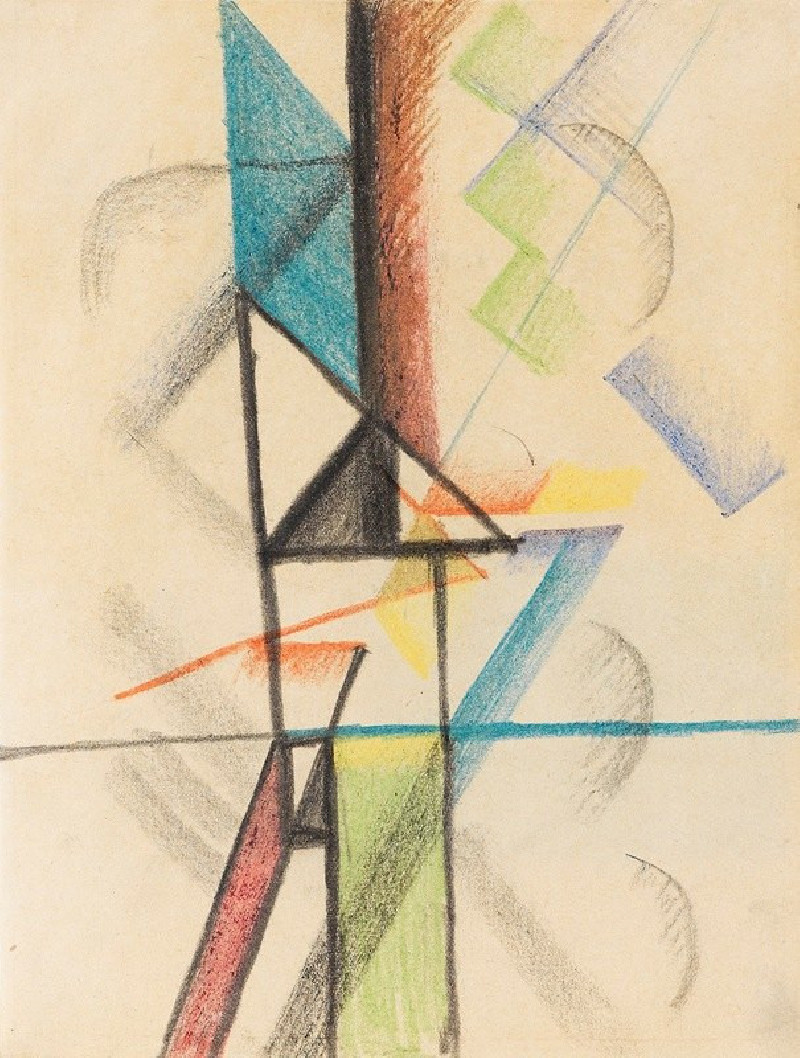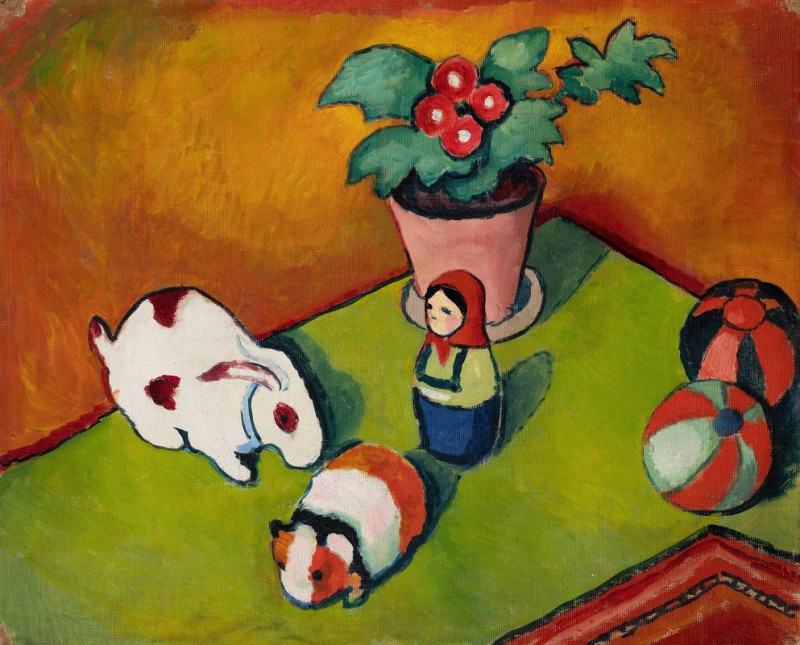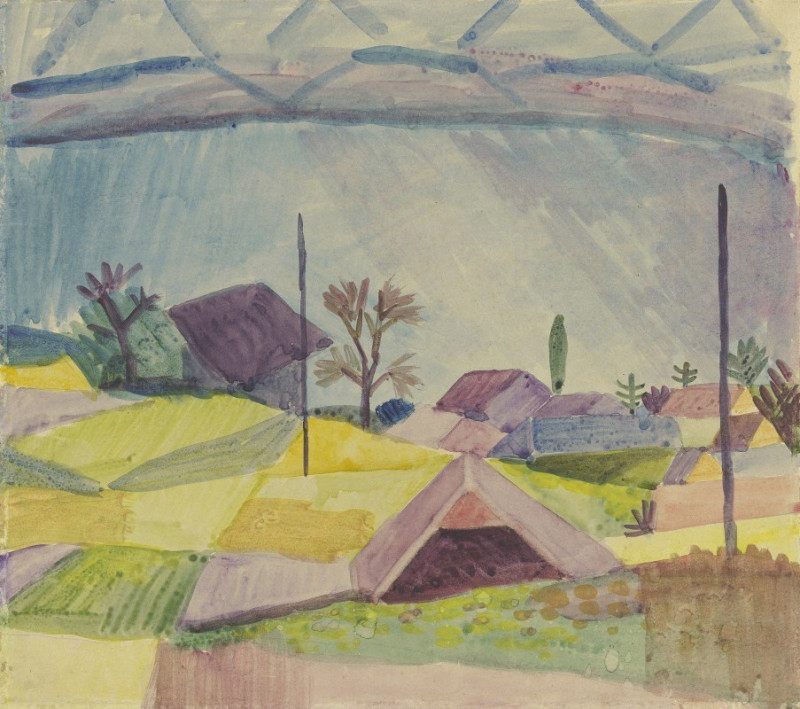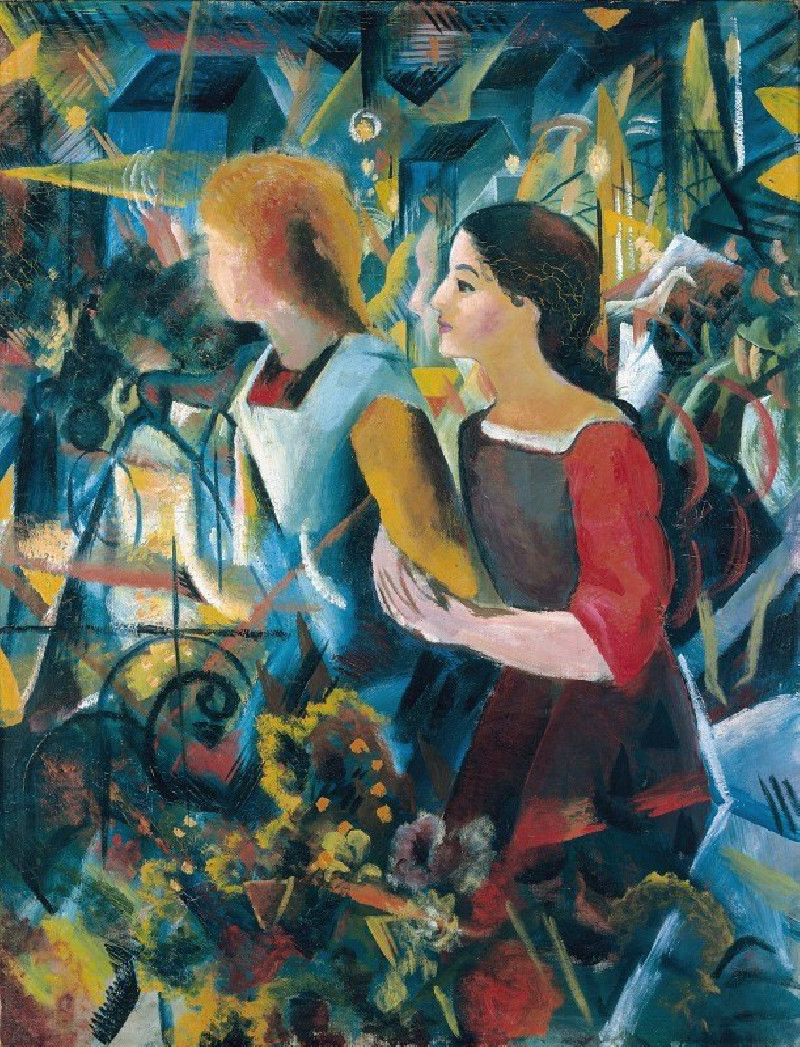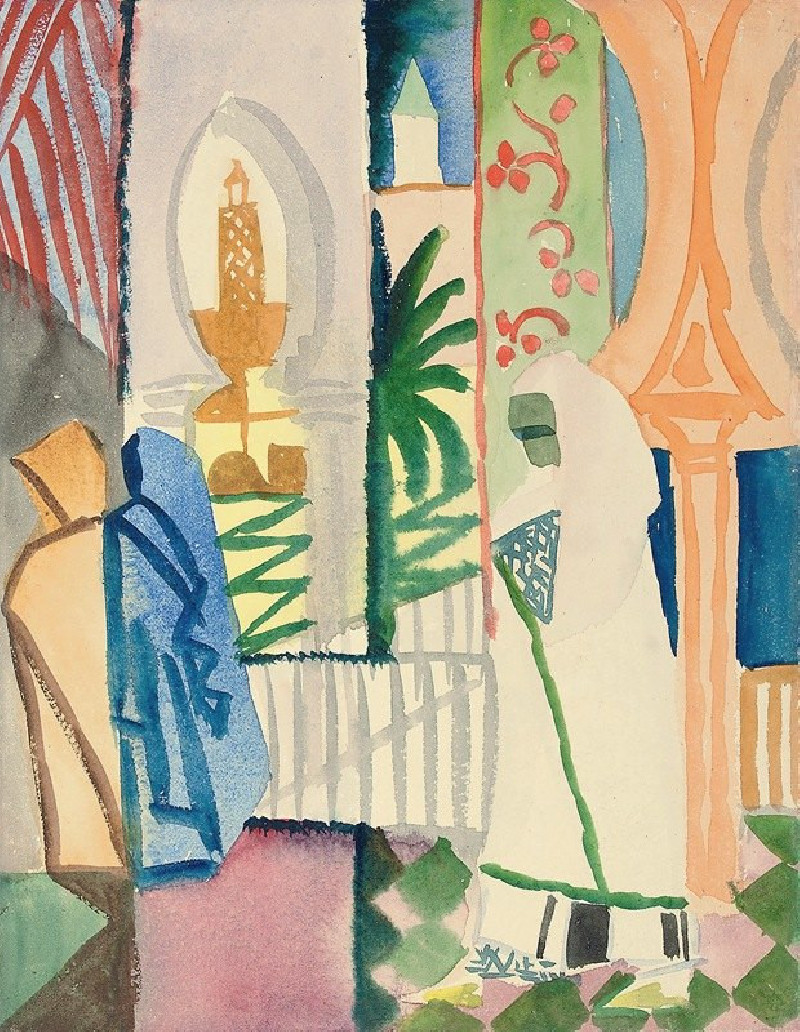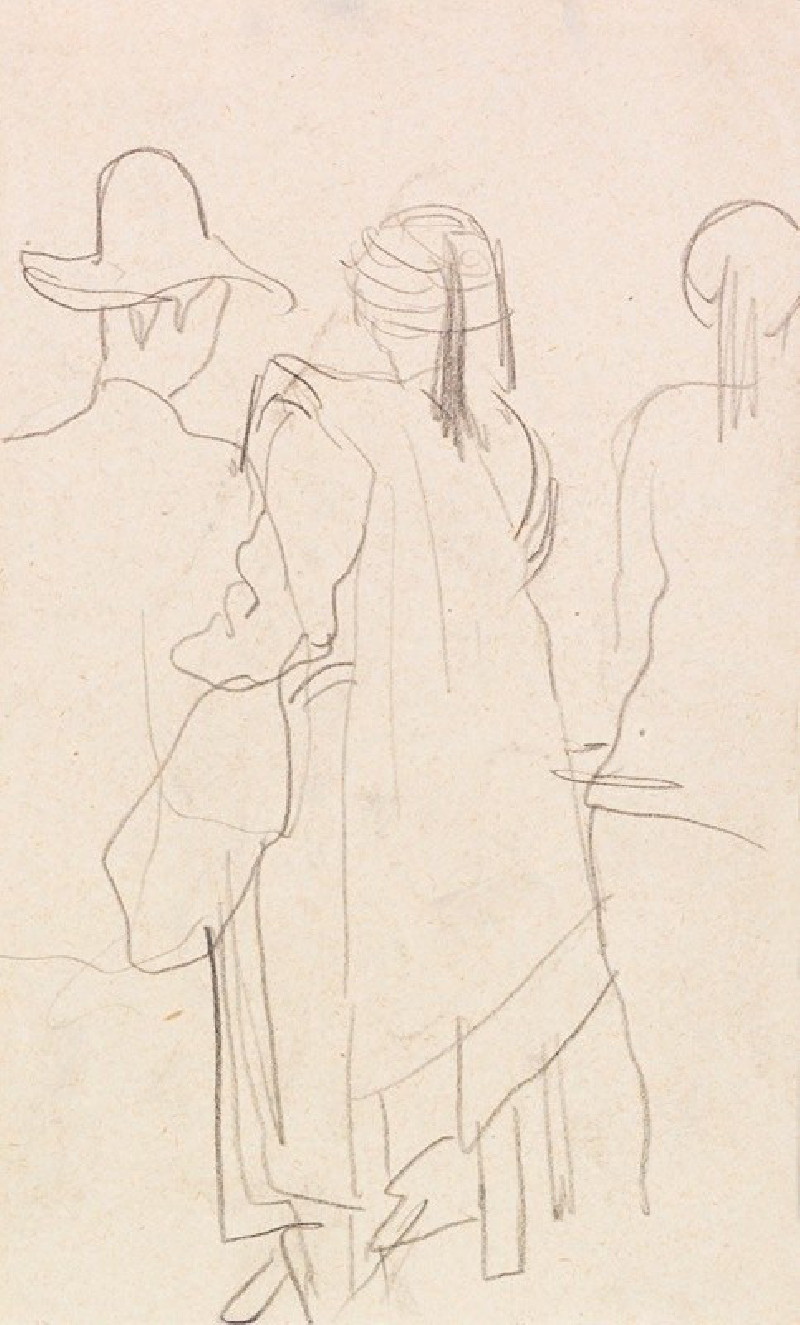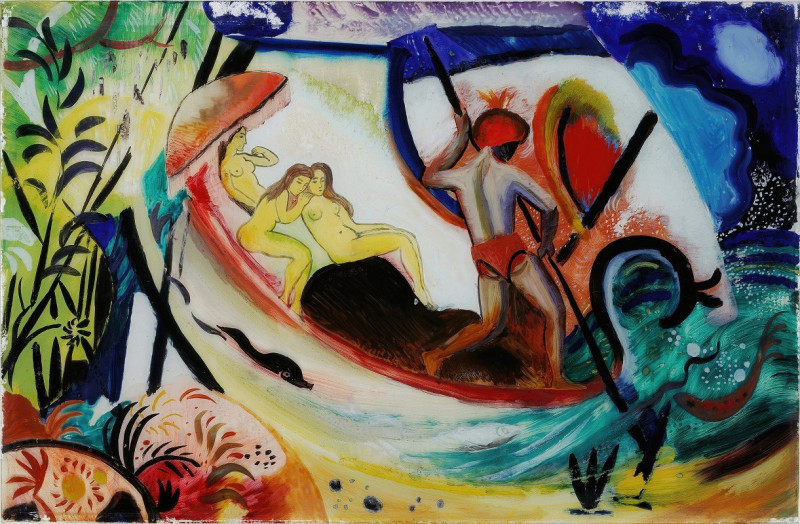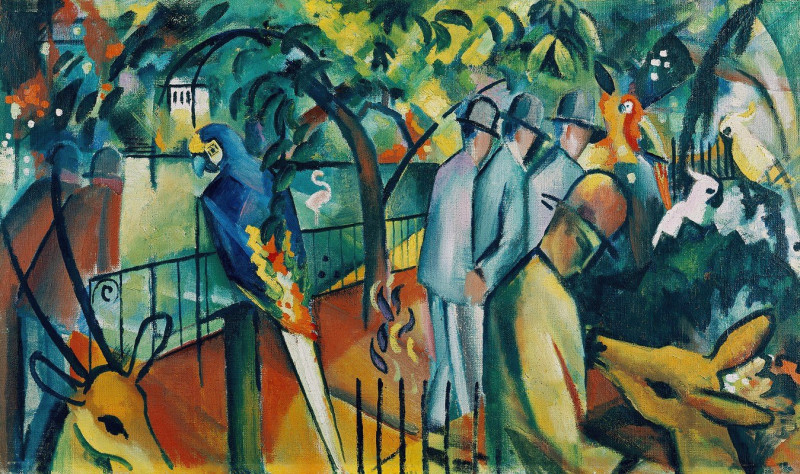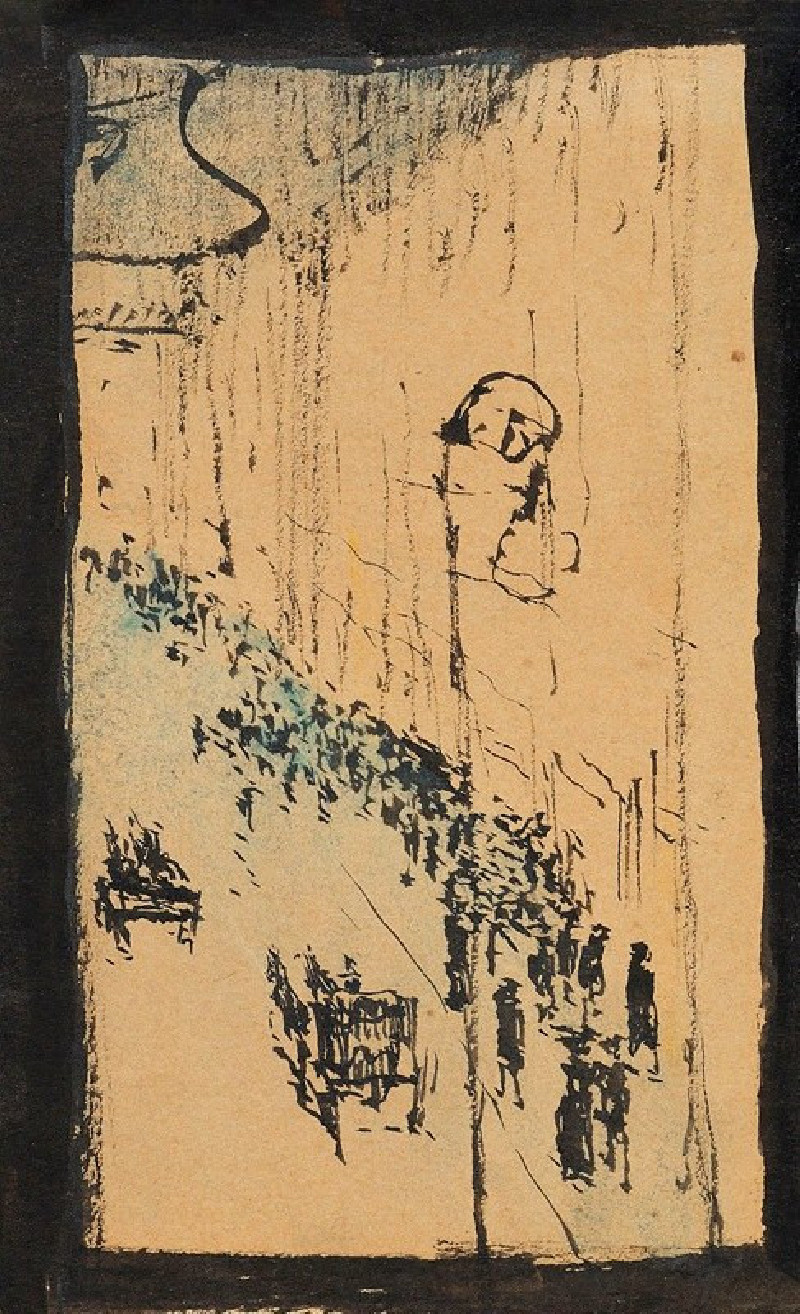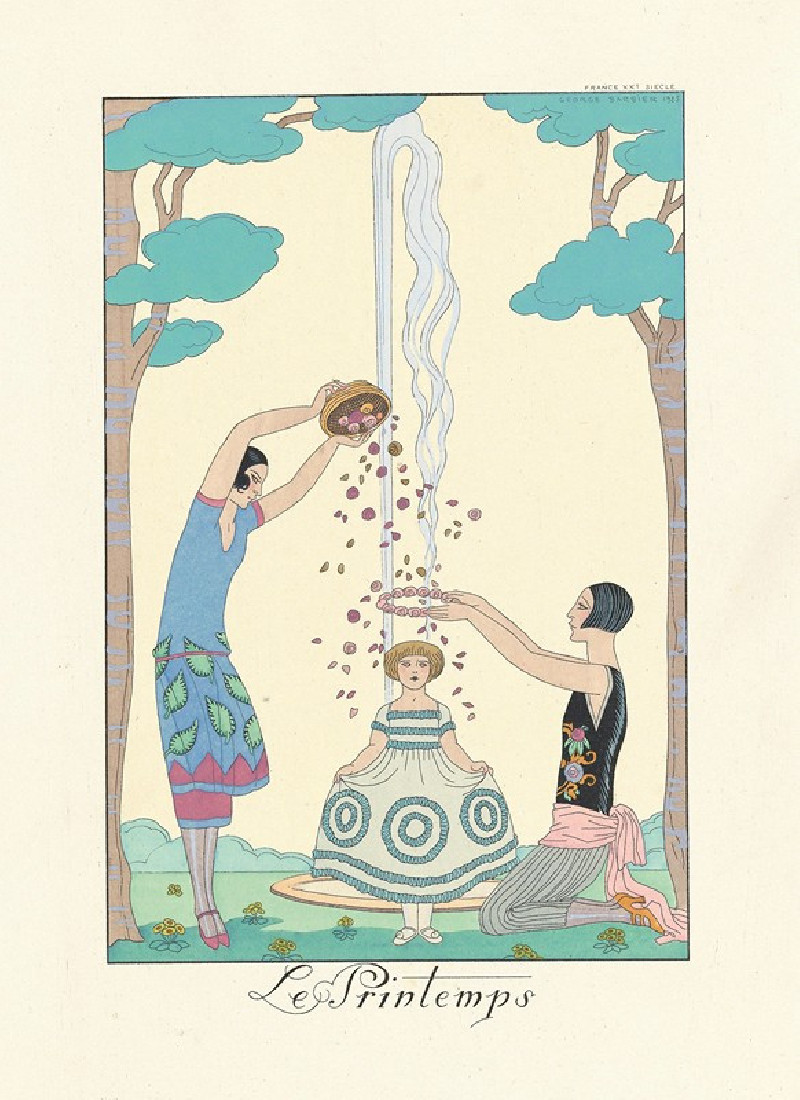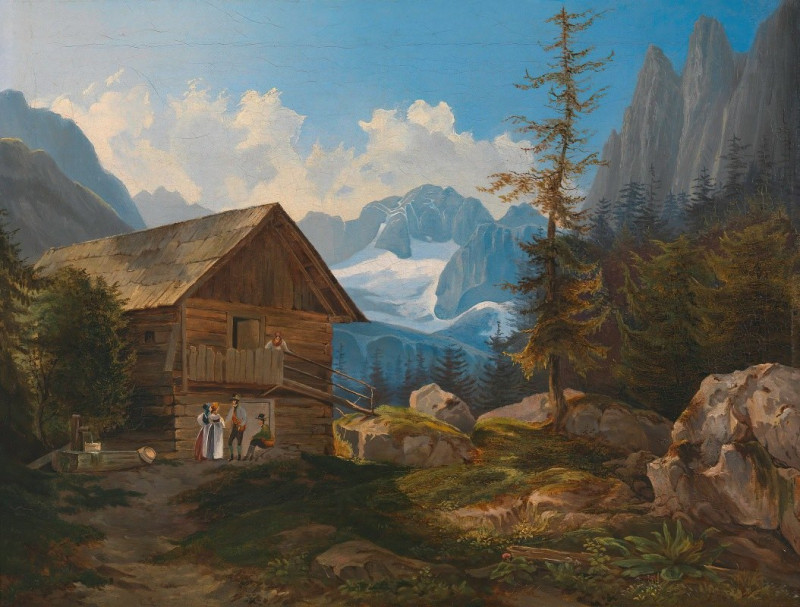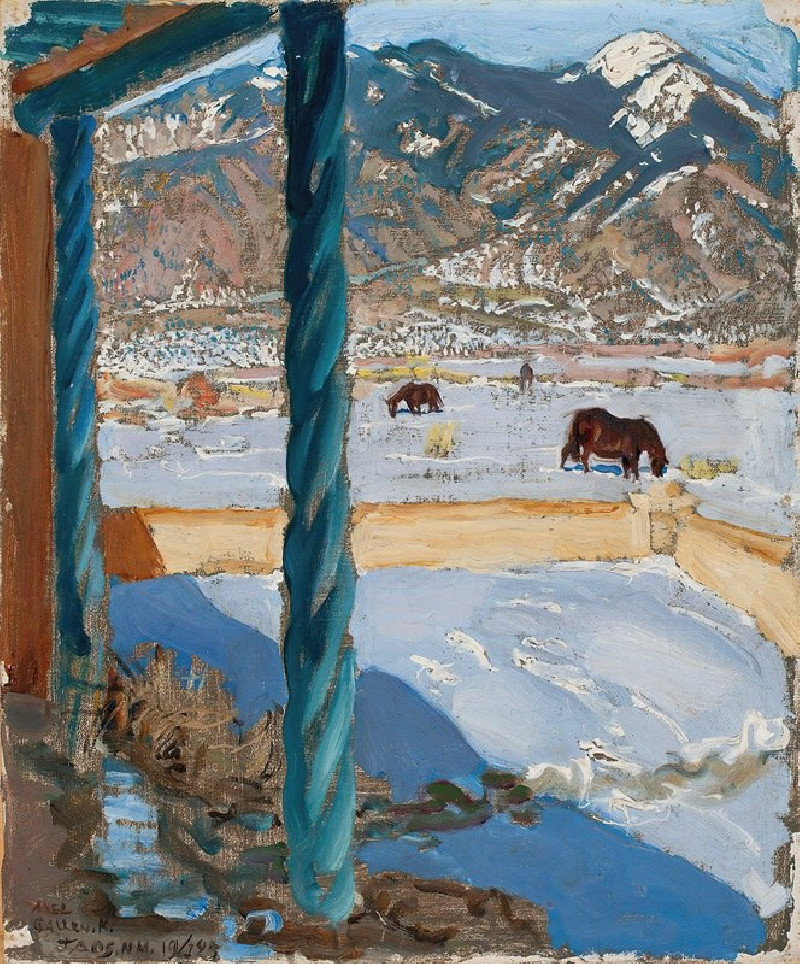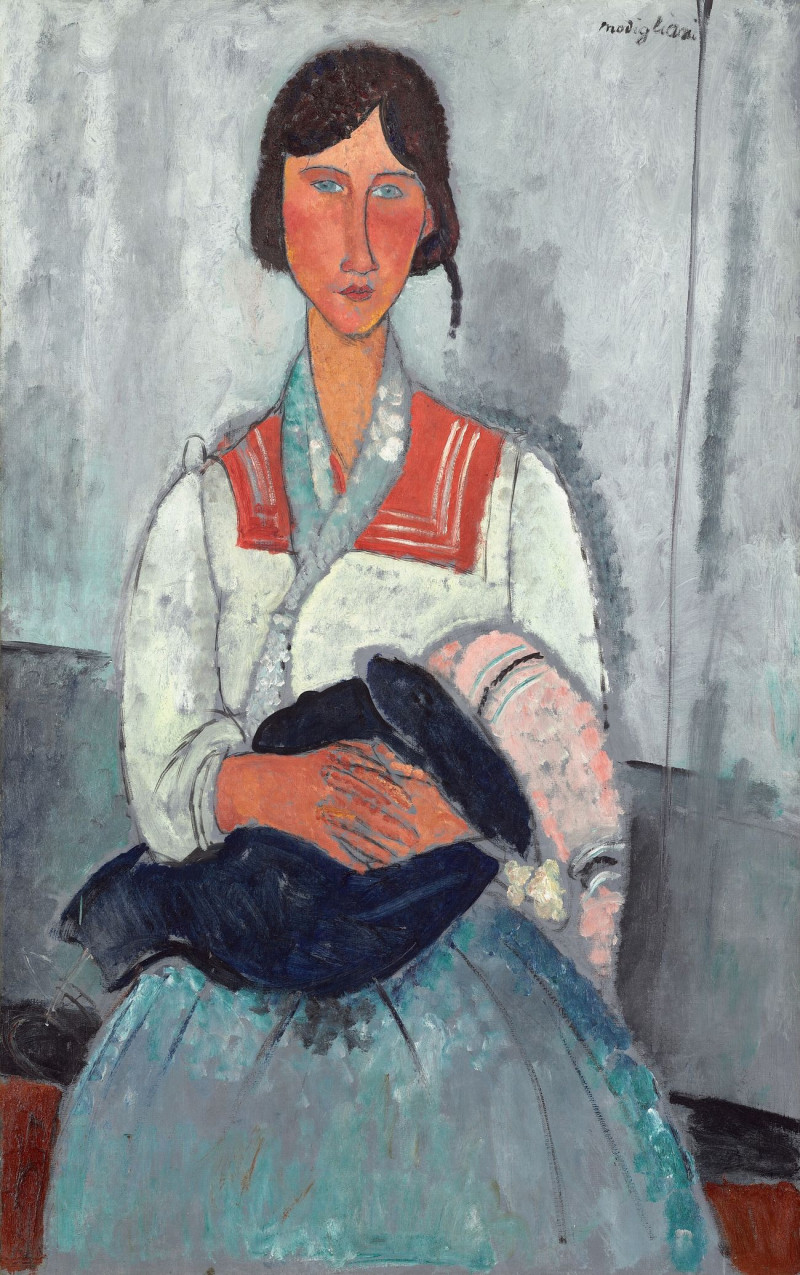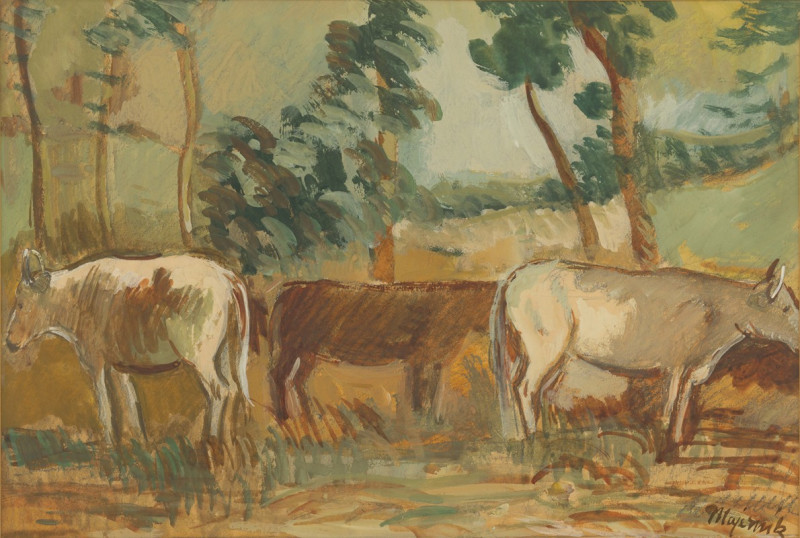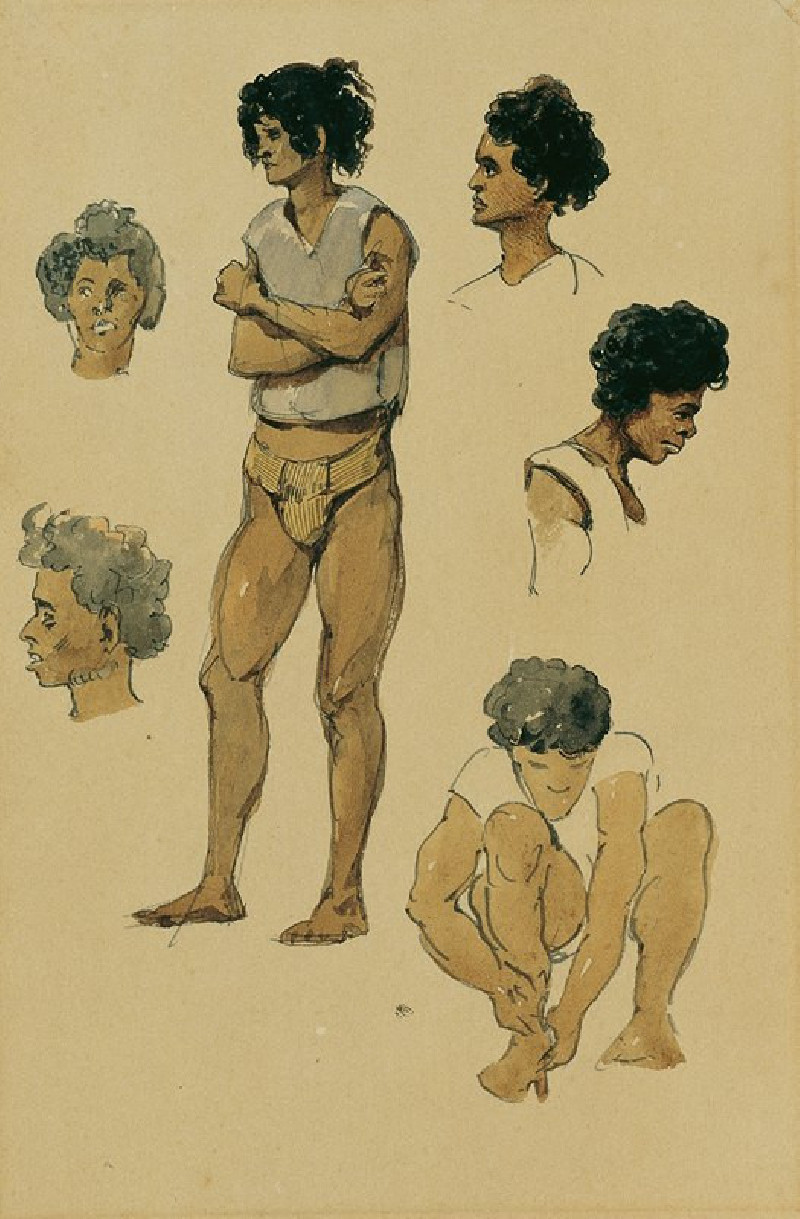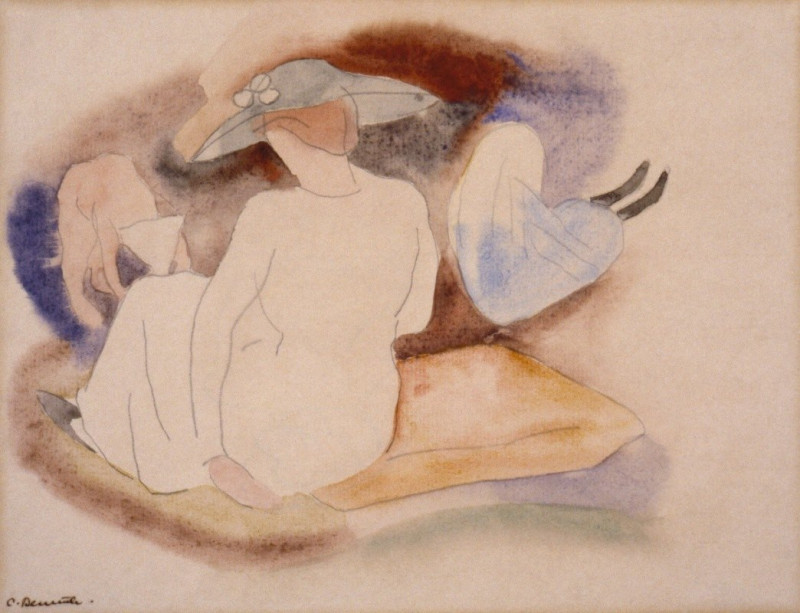Landscape with Cows, Sailboat, and Painted-in Figures (1914)
Technique: Giclée quality print
Recommended by our customers
More about this artwork
**August Macke, a master of German Expressionism, uniquely combines vibrant color with dynamic composition in his painting "Landscape with Cows, Sailboat, and Painted-in Figures". This 1914 artwork encapsulates Macke's ability to transform everyday scenes into enchanting visual experiences.In this piece, Macke depicts a tranquil rural landscape, rich with layers of color and texture. The foreground features two robust, brown cows, elegantly painted with patches of dark tones that suggest volume and form. These cows are the grounding elements in the scene, tethering the viewer to the natural world.Behind these figures, the environment dissolves into a tapestry of abstracted shapes and brilliant colors. Buildings are delineated by bold oranges and yellows, contrasting sharply with the lush greens of the overhanging trees. The blues and whites in the middle distance evoke a peaceful sailboat gliding across a lake, adding a sense of quiet motion.Macke’s technique allows the elements to intermingle visually, creating an overall impression of a vibrant, living painting where nature and humanity coexist in harmony. This artwork isn’t just a simple landscape; it is a moment of peace, crafted from the bold colors and shapes that define the Expressionist movement.Whether you are a long-time admirer of Expressionism or new to August Macke, "Landscape with Cows, Sailboat, and Painted-in Figures" offers a captivating look into the serene yet complex visions often explored in Macke's paintings.
Delivery
Returns
August Macke (3 January 1887 – 26 September 1914) was a German Expressionist painter. He was one of the leading members of the German Expressionist group Der Blaue Reiter (The Blue Rider). He lived during a particularly innovative time for German art: he saw the development of the main German Expressionist movements as well as the arrival of the successive avant-garde movements which were forming in the rest of Europe. Like a true artist of his time, Macke knew how to integrate into his painting the elements of the avant-garde which most interested him.


